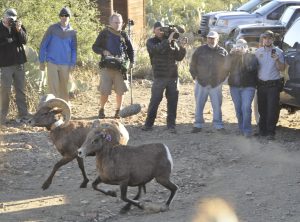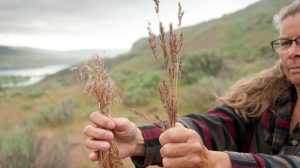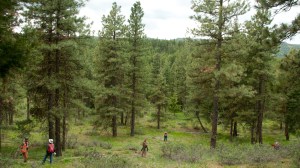Discover stories in Fire
Recovery: Saving a Woodpecker Through Research & Ingenuity
The red-cockaded woodpecker was once a symbol of “endangered birds versus people.” But the bad old days are over.
Australian “Firehawk” Raptors Intentionally Spread Wildfires
At least three Australian raptor species intentionally spread wildfires by carrying smoldering branches to unburnt areas, according to a new paper that confirms long-held traditional Aboriginal knowledge.
Trees Tell Us Much About Fire: What Will We Do About It?
In the Pacific Northwest, trees are abundant and wildfire is a constant presence. These days, wildfires are often catastrophic, but historically, fires were integral to a healthy ecosystem.
Can Conservation Provide Water for Cape Town in a Time of Drought?
Can a conservation tool called water funds provide clean water for the residents of Cape Town, while also protecting the region’s unique plant diversity?
Can India’s Farmers Deliver Clean Air Along with Good Food?
Delhi’s residents live with air pollution and smog every day. Could changing farming practices help change this reality?
Camera Traps Chronicle Restoration Success at Davis Bend
Camera traps on Davis Bend Preserve, in the most biodiverse region of the Green River, show the benefit of fire to regenerate prairies and the return of wildlife to the area.
A New Life for Bighorn Sheep in the Land of Laughing Waters
Desert bighorn sheep leap into a new life in Aravaipa Canyon Wilderness, the wildest, most remote area of Arizona outside the Grand Canyon.
Burning for Biodiversity: How Hunting Promotes Healthy Ecosystems in the Australian Desert
Anthropological research shows that Aboriginal hunting actually increases biodiversity in Australia's western deserts.
Attacking Invasive Cheatgrass at Its Root
Not much can stop cheatgrass from spreading. That's why scientists are turning to a solution in the soil, a microbe that inhibits the growth of cheatgrass roots, giving native plants a chance to return.
Technology to the Rescue for Foresters in the Thick of It
Managing forests to remain resilient through wildfire, drought, and forest pests in a changing climate is complicated. New technology is helping forest managers to restore forests to a healthy mix of spatial diversity.
Maintaining Healthy Forests Takes More than Planting Trees
Conservationists should plant more trees, but that’s not the whole story. America’s forests must be resilient to survive wildfires and invading forest pests in a changing climate.
10 Innovations That Are Changing Conservation
Around the globe, conservationists are employing the latest technological advances to make a difference for people, wildlife, oceans, forests and clean water.











